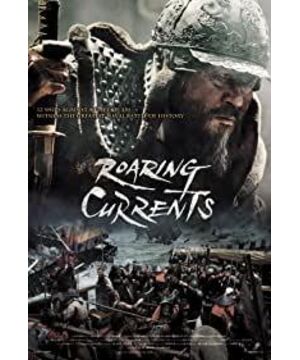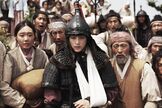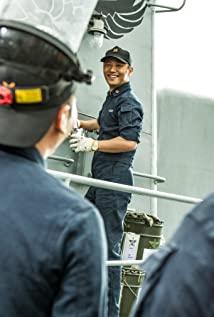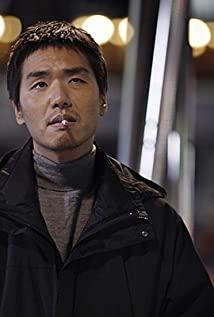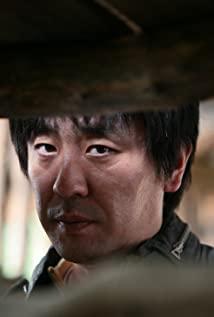South Korea’s films with Yi Sun-sin are basically the same as our "Hengdian" theme (you see, I don’t even mention anti-Japanese hahaha) is a concept, many but not precise, the difference is that we like to shoot because of social needs, and they shoot In addition, there is really nothing to shoot. The Korean nation has only produced such a great hero that is not only recognized by its own country but also by other countries (mainly China and Japan), how can it not Big book special book? The filmmakers basically treat this person with two attitudes: nonsense and random fabrication.
This is an inevitable phenomenon. We can see by doubling Mr. Yi Sun-sin's resume that this man was shrouded in this fate no matter before or after his fame, and even after his death. First of all, putting aside his historical achievements, he spent most of his time before becoming famous: shipbuilding. If it were during the Taiping period, he might only be able to gain the title of "famous craftsman". At that time, the attitude of the hand-craftsman may have gone with history within a few years, but the ship he built was a warship, and even more so, he was at war! So it was at this time that fate first teased him. Now the well-known "turtle boat" was not invented by him. The first mention of tortoise boats came from records in the "Records of the Joseon Dynasty" in 1413 and 1415. These tortoise boats are called "Ge Ship" or "Meng Chong", and they are mainly used to resist Jurchen and Japanese pirates. Mentioning "Meng Chong" may get agitated. That's right, "Meng Chong" here. It’s the stern ships that we had as early as the Three Kingdoms period. It’s just that China has never been an "Ocean State" and has little interest in ships, but North Korea is different. They are surrounded by the sea on three sides and have limited resources. This kind of ship is small in size, uses less materials, and is in great demand for a well-moving ship. Yi Sun-sin has spotted this point, so after his improvement, the "turtle ship" was born, except for a few stingy historians. , Ordinary people who would entangle the difference between "invention" and "improvement", so the first big hat of "inventor" was put on Yi Sun-sin.
After Yi Sun-sin became famous during the Battle of Hanshan Island, he was dismissed for a while. This plot also appeared in the background introduction at the beginning of the film. The true history inside is an extremely funny and embarrassing story. At this time, the life outlook of Yi Sun-sin, the "king of the gun" of the Korean nation, also changed drastically. We all know that in the Ming Dynasty, the kingdom of North Korea had no more admiration for China, so much so that they learned whatever China had, no matter how good or bad they were, and copied them all. In the end, they finally "partisanship" the sign of Ming's fall. I also learned it. I carefully checked that period of history. It was because Yi Sun-sin was caught in a party fight and was cut off from the job by the Joseon King, who no one trusted. Of course, the more popular saying is that the Japanese used "anti-intermination". Some people even directly suggested that Toyotomi Hideyoshi’s idea was the idea. In fact, monkeys are really not that capable. Anyone who knows a little bit of history knows that as long as the phenomenon of "partisan struggle" occurs in a dynasty, the most powerful people will be killed. In fact, Yi Sun-shin Fortunately, when he was played half-dead, he came back and fought an earth-shattering "Mingliang Sea Battle", but after his comeback, as I said earlier, he had a different view on life and death.
The biggest stimulus of this film to the textual party is that in the early days of the war, Yi Sun-sin personally led the general ship to fight against Japan alone. Turning to historical materials, in the initial stage of the Mingliang naval battle, Yi Sun-sin sent two small boats. To lure the enemy (the two ships he raised the flag later), but historical materials did not say whether he was in the army or on the ship. This gave the filmmakers a lot of imagination. We saw what was shown in the movie. The picture of is actually the story closest to historical facts after rigorous logical reasoning. Think about it, when an ordinary soldier faces an enemy dozens of times larger than our army, fear must be the only psychological activity, so in the film The analysis of Yi Sun-sin’s "fear theory" is methodical. He has only twelve ships, and he is not a turtle ship. Without any war history, precedent, or psychological preparation, he has to face more than 300 ships. Apart from selling himself, we couldn’t think of any other way afterwards, so I believe he followed the two ships to lure the enemy together. If there is no way to transform fear into fighting spirit, what does he use to transform his subordinates? However, the film workers processed his behavior more artistically, and asked him and his general ship to go out to meet the enemy first. The lure was not to the opponent, but to the subordinates who were watching behind him. Of course, to do so. Another explanation is that after experiencing the ups and downs of his life, he saw that the court he was loyal to was suffering from an incurable disease, and he didn't want to live anymore.
Regarding the latter argument, the best argument is the "Luliang Sea Battle" where Yi Sun-sin died in the battle. This battle took place a few months after the "Mingliang Sea Battle" and was the last naval battle of North Korea against the Japanese. The field was originally a typical chasing battle of "beating down the water dog", which actually caused the biggest general casualties since the war against the Japanese. The Ming Dynasty navy deputy admiral Deng Zilong and the North Korean navy admiral Li Sun-chen both died. A deputy commander was still chasing the enemy. After thinking about it, I don’t know how to explain it to others. Let’s take a look at how Yi Sun-sin died. According to historical data, he led the turtle ship into the enemy line and was surrounded. Then he died in battle. Let's take a look at his previous battle history and achievements. How could this be done by a normal Yi Sun-sin? Forget who said that the greatest honor of a soldier is to die on the last bullet in the last battle. Yi Sun-sin really did it.
After Yi Sun-sin's death, he only got the title of Xuanli hero of the first level, and 43 years after his death, he was named the now-known "Chong Wu Gong". Why did he get the highest rank after so many years of death? The posthumous name? Because people always become gods step by step, and Yi Sun-sin’s story has been processed and myths for several generations, and people finally find a person in history who is similar to him in terms of status, image and story. That is: Zhuge Liang...
View more about The Admiral: Roaring Currents reviews


